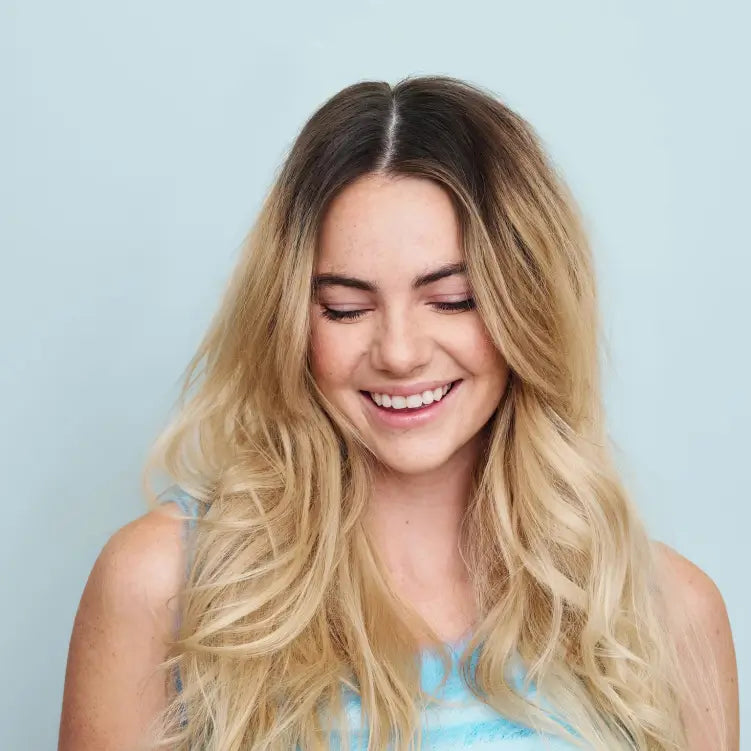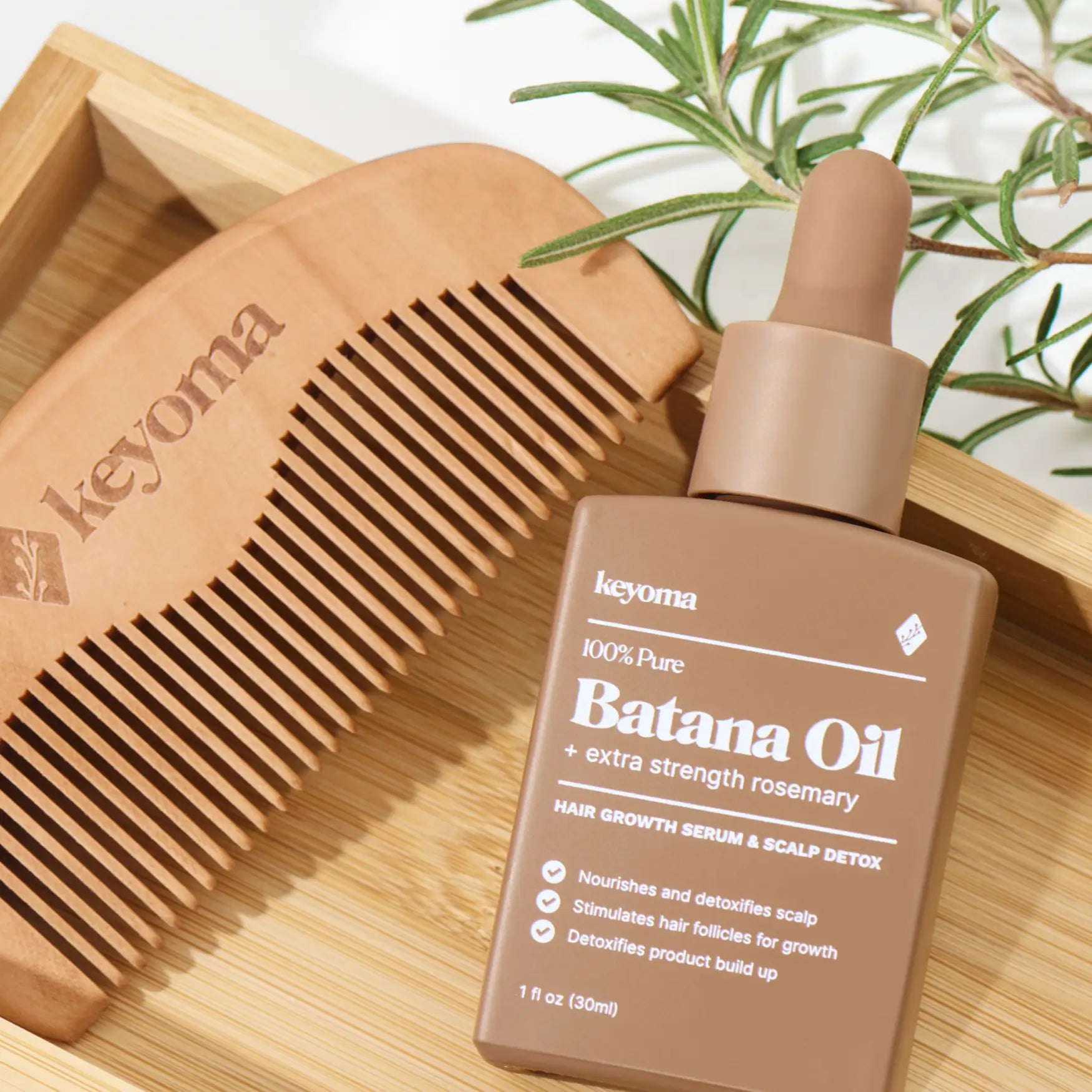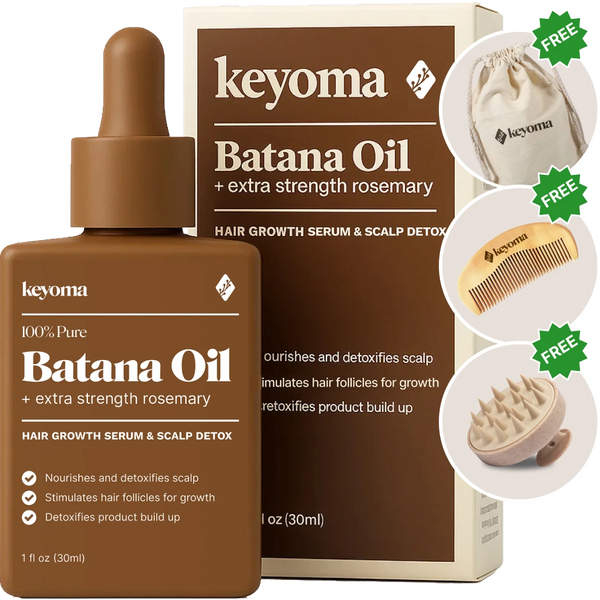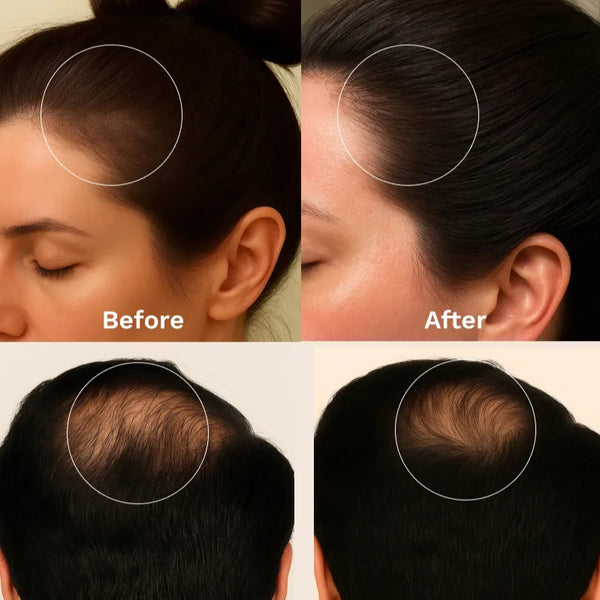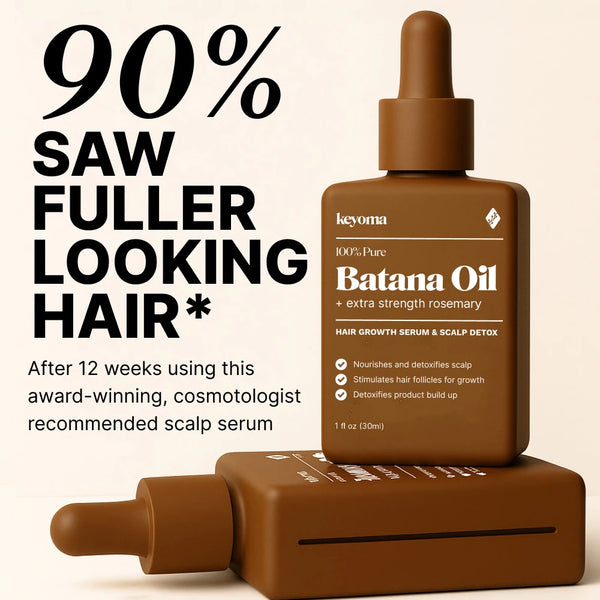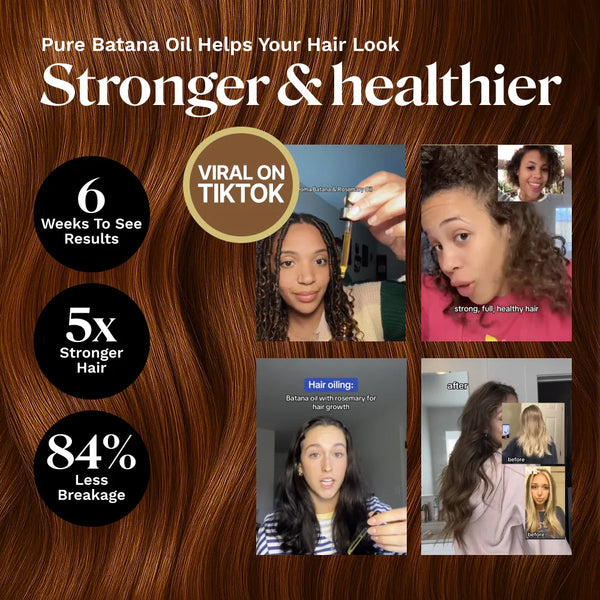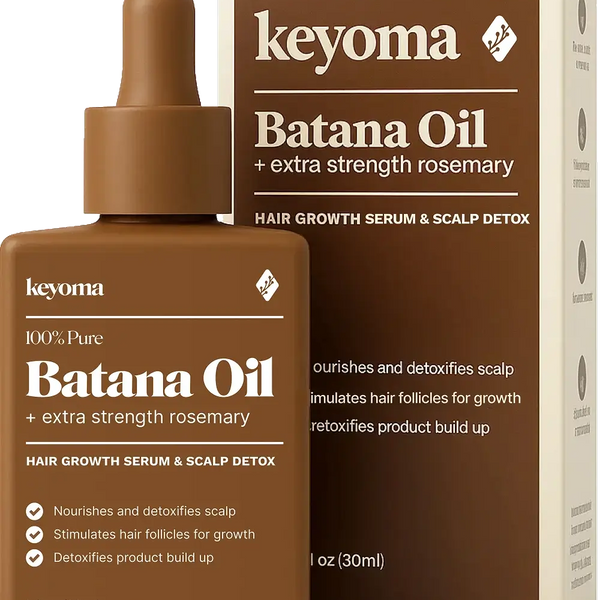In this article
For the longest time, serums were seen as nothing more than gloss in a bottle, made to smooth flyaways and add shine. Today, though, what’s inside those bottles looks very different—formulas built with concentrated actives that go beyond surface-level results and actually support real hair growth.
In this article, we’ll look at how hair serums help with regrowth, what makes them work, and how to fit them into your routine so you get the best results.
Can Hair Serums Regrow Hair?
Yes, hair serums can help with regrowth, and they’re able to do so mainly by delivering concentrated actives straight into the scalp.
These actives often include things like vasodilators, peptides, antioxidants, and botanical extracts that target follicle activity in ways such as:
-
Improving blood flow and circulation to the scalp
-
Calming scalp inflammation
-
Sending “growth signals” that tell follicles to stay alive and active
All that’s to say, serums help create the right conditions for follicles—especially the weaker ones—to produce stronger, healthier strands and to hold on to existing hairs for better lengths.
To many, this might come as a surprise since serums have long carried the reputation of just coating strands to make them feel smoother or shinier. But many serums today are formulated for deeper penetration, which is why they’re able to carry out those functions above.
That said, it's worth mentioning that hair serums, of course, can’t create brand-new follicles or reverse permanent loss. Those limits remain beyond what cosmetic serums alone can do.
Types of Serums and What They Actually Do
As mentioned earlier, serums—once thought of as products that only add shine or smoothness to hair lengths—are formulated today with actual treatment benefits. We can then say that serums can be grouped into two main categories, each with very different purposes.
Styling or Cosmetic Serums
These are the types of serums that coat the outside of the hair shaft to make it look glossy, control frizz, and reduce tangling.
Silicones in cosmetic serums create a thin, smooth film over each strand, filling in rough cuticle gaps so light reflects evenly. Light oils, such as argan or jojoba, help reduce static and friction.
That barrier makes hair feel sleek, appear shinier, and tangle less. They’re applied along the mid-lengths to ends, and the effect is mostly instant but temporary.
Scalp or Treatment Serums
These types of serums are specifically designed to be massaged into the scalp.
Their ingredient lists often include actives like minoxidil, peptides, caffeine, niacinamide, or botanical extracts such as rosemary, and even bee venom.
Instead of just sitting on the surface, they penetrate into the skin around the follicles, where they can influence blood flow, calm irritation, or send growth-related signals.
With all that said, we’ll be focusing on this second category of hair serums—the kinds that actually help with hair regrowth.
Active Ingredients in Serums That Help With Hair Regrowth
Minoxidil
Minoxidil has an interesting origin story in the hair treatment world. It was first developed as a blood pressure medication, but researchers soon noticed a unique side effect: it stimulated hair growth.
Since that discovery, it has gone on to become today’s standard for hair growth treatment, which is why you’ll find it not only in topical serums but also in other formulations like shampoos and foams.
It works by opening potassium channels in follicle cells, which boosts blood flow and oxygen delivery to the roots.
This prolongs the anagen (growth) phase of the hair cycle and can even enlarge miniaturized follicles so they’re able to produce thicker strands.
Peptides
Peptides are short chains of amino acids that act as signaling molecules in the body. When used in hair serums, they can influence the activity of dermal papilla cells and fibroblasts—the key cells that regulate follicle growth cycles.
By sending biochemical signals, peptides encourage follicles to remain in the anagen (growth) phase longer and support the production of stronger hair fibers.
Here are two notable types and what they do:
-
Copper peptides: They improve blood vessel formation and reduce inflammation around follicles, supporting a healthier environment for regrowth.
-
Biomimetic peptides: They're designed to mimic natural growth factors, stimulate keratin production, and improve overall scalp health.
Caffeine & Niacinamide
Caffeine and niacinamide often appear together in scalp serums because they work on different but complementary pathways.
Caffeine acts primarily as a vasodilator and stimulant, which means it widens blood vessels in the scalp and increases circulation. More circulation delivers a stronger supply of oxygen and nutrients to the follicles, which helps them stay active and productive.
On top of that, caffeine has been shown to counteract the effects of DHT, a hormone that contributes to follicle miniaturization. In other words, it helps protect follicles from shrinking and keeps them capable of growing thicker strands.
Niacinamide (Vitamin B3), on the other hand, supports the scalp barrier by improving moisture retention and reducing inflammation. This in turn reduces irritation and keeps the environment around follicles more stable, indirectly supporting regrowth.
Niacinamide has also been linked to increased keratin production, which contributes to stronger, more resilient hair fibers.
For someone with early thinning, this pairing can support both visible density in the short term and healthier follicle function in the long run.
Rosemary Extract
Rosemary’s hair regrowth capabilities were highlighted in a 2015 study, where its performance in patients with androgenetic alopecia was found to be as effective as 2% minoxidil in promoting new growth.
The best part is that the rosemary group reported fewer side effects such as scalp irritation.
We can trace these effects back to the compounds rosmarinic acid and carnosic acid. Both work to calm low-grade inflammation that can interfere with healthy follicle function.
For these reasons, it’s no surprise you’ll find rosemary in all sorts of hair products like shampoos, conditioners, and leave-in formulations. Keyoma’s Batana Oil is also infused with this plant extract, with before-and-after results that speak for themselves.
Saw Palmetto
Sourced from the berries of the Serenoa repens palm, native to the southeastern United States, saw palmetto is often included in hair regrowth serums because of its potential to block the activity of 5-alpha-reductase.
This enzyme is responsible for converting testosterone into dihydrotestosterone (DHT), elevated levels of which are linked to androgen-related thinning around the crown and hairline.
By blocking, or at least reducing, the amount of DHT activity at the follicle level, saw palmetto helps protect follicles from miniaturization—the gradual shrinking of follicles until they can no longer produce strong, visible strands.
Bee Venom
Bee venom, also known as apitoxin, is a natural secretion from honeybees that contains a mix of peptides, enzymes, and amino acids.
Its most studied component, melittin, has shown the ability to stimulate dermal papilla cells, which are central to regulating follicle activity and the hair growth cycle.
In fact, a 2016 animal study found that topical bee venom not only promoted hair growth in mice but also reduced the expression of 5α-reductase, the enzyme responsible for converting testosterone into DHT—the hormone strongly linked to pattern baldness.
The same research noted increased activity of growth factors like IGF-1 and VEGF, both important for sustaining the follicle in its active growth phase.
Of course, it’s worth pointing out that this particular study was done in animals, and we don’t yet have the same level of proof in humans. Still, the way bee venom works—by lowering DHT and boosting growth factors—is the very same pathway that established treatments aim for.
And that’s why it’s not far-fetched to imagine it offering similar benefits for people, at least in theory.
Bee venom is generally safe in the diluted concentrations found in cosmetic serums, but people with bee allergies should take extra caution
When a Serum Can Work—and When It Probably Won’t
So far, we've made it clear that behind active ingredients like minoxidil, rosemary, and bee venom are strong research and theories backing their capabilities for hair regrowth.
However, even with those promising mechanisms, serums have their limits. They aren't miracle products, and whether they help or not depends on the circumstances.
Here are situations where serums are more likely to work:
-
Early pattern thinning: follicles are still alive but producing finer hairs, so stimulation helps them grow stronger.
-
Postpartum shedding recovery: once hormone levels start to stabilize, serums can support regrowth and shorten recovery time.
-
Stress-related shedding (telogen effluvium): after the stress trigger ends, serums can encourage follicles to re-enter the growth phase more quickly.
-
Tension-related thinning (traction alopecia): if efforts to avoid or minimize the use of tight hairstyles are made, serums can help follicles recover and regrow around the hairline and temples.
On the other hand, there are circumstances where serums probably won’t deliver meaningful results. This is usually when the follicles are permanently damaged or when the underlying issue is medical in nature. Specific situations include:
-
Scarring alopecia: where follicles are already replaced by scar tissue.
-
Active medical conditions: such as thyroid disease, autoimmune disorders, or uncontrolled hormonal imbalances.
-
Severe nutrient deficiencies: if the body lacks essential building blocks, topical serums alone cannot restart growth until those deficiencies are corrected.
How to Properly Apply Hair Growth Serum (Simple Routine)
Scalp serums, while proven to help with hair regrowth, are only as effective as the way you apply them. Here’s a simple, effective routine to follow:
-
Prep your scalp. Cleanse with a gentle shampoo, or use a clarifying wash once a week to remove buildup. Dry your scalp thoroughly, or leave it slightly damp.
-
Part your hair. Divide your hair into small sections to expose the scalp.
-
Apply the serum. Place a few drops directly along the part lines.
-
Massage it in. Use your fingertips to gently massage the serum for 1–2 minutes. This helps distribute the formula evenly and encourages circulation.
Most treatment serums are applied once or twice daily, though it’s always best to check and follow the instructions on the label.
And while serums can definitely kickstart visible improvements, pairing them with lifestyle shifts like eating a balanced diet, getting enough sleep, and keeping up with proper exercise—and doing all of this with consistency—compounds the benefits over time and makes your serum routine even more effective.
Frequently Asked Questions (FAQs)
Can hair serum stimulate follicles?
Yes, hair serum can stimulate follicles as long as they are still alive. The concentrated actives—like minoxidil, peptides, caffeine, or rosemary—deliver signals or improve circulation around follicles, encouraging them to stay active and grow stronger strands.
What's the difference between oil and serum?
Serums are lighter in texture, which makes them easy to use every day—or even twice a day—since they sink quickly into the scalp without leaving residue.
Oils, on the other hand, are thicker and usually saved for overnight or deep treatments, where they can sit longer on the surface and deliver heavier nourishment.
That said, the two aren’t worlds apart. Both can add shine and smoothness, and when they’re formulated with the right actives, they can also support regrowth.
Are hair serums safe for daily use?
Yes, most hair serums designed for scalp application are safe to use every day or even twice daily. They are typically formulated to be lightweight, non-greasy, and gentle enough for frequent application.
That said, it’s important to follow the label instructions. If you have known allergies—such as bee products or certain botanicals—always check the ingredient list first.
Pick Your Serum, Commit to the Routine
Wrapping up, hair serums can no doubt help with regrowth, especially the ones formulated with proven actives. How the results turn out, though, will differ from person to person—and more importantly, depend on consistency of use and your serum of choice.
If you’re just starting out, I can personally vouch for rosemary. It’s a natural alternative that’s been proven to work just as well as synthetic minoxidil (and just to share, that’s actually the main reason I use Keyoma’s Rosemary-Infused Batana Oil in my own scalp routine)
Want more hair care tips, ingredient breakdowns, and routines that actually work? Head over to the Keyoma blog! I’ve got plenty waiting for you there.
Featured Product
100% Pure Batana Oil + Rosemary
↓Best Batana Oil to Buy↓
1 Month
Subscribe & Save
- 30-day supply delivered monthly $35
- 30% off for life $6
- Free haircare essentials kit $33
- Free custom wooden comb $10
- Free scalp massager $15
- Free eco-friendly travel bag $8
- 30-Day Money Back Guarantee
- Free Shipping
- Online portal for easy cancel, skip, or pause.
1 Month One Time Purchase
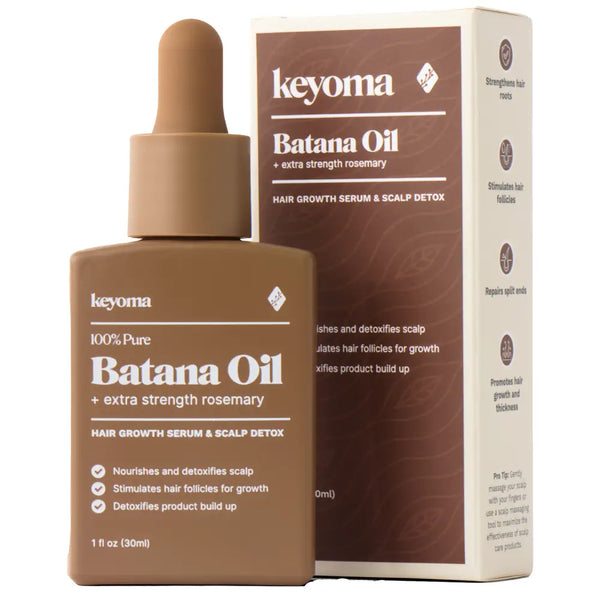
- 30-day supply $50
- 30% off for life $6
- Free haircare essentials kit $33
- Free custom wooden comb $10
- Free scalp massager $15
- Free eco-friendly travel bag $8
Your Cart
Your Cart is empty
Let's fix that
You might like...
Search our store
